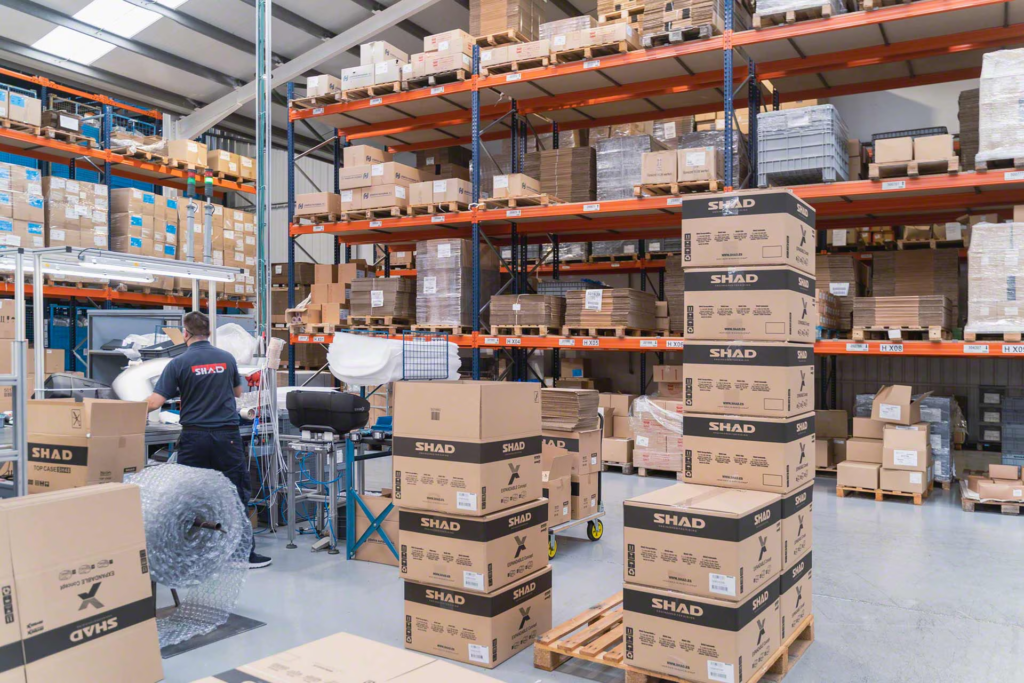Thanks to tech devotees who refuse to toe the line and always pursue out-of-the-box notions, we can now easily expect supreme disruptions everywhere, and logistics and supply chain management are not spared.
Tech news updates in India which you can bank upon.
What’s more, we have a flurry of exceptional use cases, too. Let’s explore some of the novel technologies in the field that will propel our freight forward in 2025.
1. The Internet of Things
The Internet of Things (IoT) is a network of physical objects that communicate and monitor data online without the need for human interaction.
IoT in logistics increases supply chain visibility at every stage and boosts inventory management effectiveness.
Efficiency, transparency, and real-time product visibility are all increased when IoT technology is included in supply chain and logistics processes.
For example, it makes it easier to monitor humidity and temperature for delicate cargo, guaranteeing product quality and adherence to legal requirements while in transit.
Predictive analytics made possible by IoT allows logistics firms to foresee changes in demand, which further impacts the sector.
By tracking fuel consumption, these solutions also reduce environmental effects and optimize scheduling and routing.
This supports environmentally friendly and sustainable supply chain methods.
2. Artificial Intelligence (Fintech news India latest)
Logistics firms can respond proactively to changes in demand thanks to AI and machine learning systems.
For instance, managers may plan supply chain procedures and cut down on inventory waste via AI-based forecasting.
AI is also being used by businesses to improve load consolidation and route planning.
This improves overall sustainability initiatives while lowering fuel use and carbon emissions.
Chatbots and virtual assistants powered by AI further enhance customer service and expedite supply chain interactions.
For jobs like inventory counting and last-mile delivery, AI-powered robots and drones are utilized, increasing productivity and lowering personnel expenses.
Additionally, AI-powered fraud detection and risk assessment tools improve logistics operations’ security and compliance.
This lowers financial losses by enabling logistics organizations to automate security tracking and protect shipments.
3. Robotics (Tech News Updates India)
Human error is decreased and supply chain operations are completed more quickly and accurately when robotics is incorporated into logistics.
Compared to human workers, robots are more productive and provide higher uptime. Fintech news latest
However, rather than replacing humans in their employment, robots collaborate with them to boost productivity.
In warehouses and other storage facilities, physical robots — such as autonomous mobile robots (AMRs) and collaborative robots (cobots) — are employed to pick up and move items.
Fintech news latest today India are just a click away.
Additionally, software robots free up human workers’ time by carrying out monotonous and repetitive duties.
4. Last Mile Delivery Concept Teems With Charm
In response to issues such as client preferences, regulatory complexity, and road congestion, last-mile delivery is undergoing a substantial technological shift.
Faster and more effective deliveries are guaranteed by alternative delivery techniques like drones and autonomous robots.
In a similar vein, travel times are decreased by carefully placing micro-fulfillment centres throughout cities.
Platforms for crowd-sourced delivery use local resources to provide flexible, on-demand service.
Options for same-day and instant delivery also satisfy customer demands for speed. Tech news updates in India.
Convenience, effectiveness, and environmental responsibility are further improved via data-driven routing, smart lockers, and sustainability programs.
At the forefront of meeting changing customer expectations while maximizing efficiency are collaborative logistics and customer experience enhancements.
5. Automation in Warehouses (latest Logistics trends)
Automated guided vehicles (AGVs), robotic picking systems, automated storage and retrieval systems (ASRS), and put-wall picking are examples of automated warehouse technology.
In addition to streamlining warehouse operations, they also impact the last-mile delivery stage.
Warehouse automation guarantees that products are precisely selected, packed, and prepared for transportation by decreasing errors and boosting productivity. Logistics trends latest for 2025.
A smooth flow of commodities is further ensured by coordinating these cutting-edge automation technologies with last-mile logistics systems.

This makes deliveries quicker and more accurate. Logistics trends latest 2025. Fintech news latest
In the end, warehouse automation becomes a crucial component of the logistics ecosystem as a whole.
These solutions enhance last-mile delivery and minimize operational logistics expenses. Fintech news latest
6. The Blockchain (logsitics news India today)
The immutability and integrity of transaction records are guaranteed by the decentralized ledger system of blockchain technology.
This improves security, transparency, and efficiency by addressing the requirement for sale and impenetrable documentation in the intricate logistical supply chain.
Blockchain gives all parties involved in logistics operations access to up-to-date, precise data on the flow and condition of goods, enabling total visibility and traceability.
A crucial component of blockchain technology, smart contracts automate and simplify several logistics processes, such as payment processing and customer clearance.
The entire supply chain is accelerated by these self-executing contracts, which allow for speedier approvals and shorter processing periods at checkpoints.
As blockchain use grows, it enhances participant trust, lessens administrative workloads, and guarantees the safe and effective international movement of products.
7. Analytics & Big Data (Tech News updates in India)
Big data and analytics solutions make use of data’s capacity to optimize processes and make well-informed decisions.
Data-driven insights improve layout designs, inventory positioning, and order-picking tactics in warehouse operations, increasing productivity.
Big data is used by logistics organizations to track current weather and position.
This allows them to enhance delivery planning and make dynamic route alterations, which lowers fuel consumption and transit times.
Logistics companies can maximize supplier relationships by using market data analysis to support strategic decision-making.
Additionally, it enables them to better control inventory levels and modify pricing tactics.
Furthermore, the creation of thorough risk management reports and the detection of irregularities and trends are made possible by the integration of big data and analytics.
This gives companies the ability to proactively handle possible interruptions and weaknesses in the supply chain.
8. The use of cloud computing
Because they are flexible and affordable, cloud-based SaaS solutions are changing the logistics industry.
Cloud-based SaaS platforms are being used by logistics organizations to offer pay-per-use models which eliminate the need for large capital expenditures in IT infrastructure.
Businesses can manage resources more effectively and reduce financial risks with this economical method.
By removing regional restrictions, cloud-based apps also simplify international logistics administration.
By offering safe and convenient venues for cooperation, cloud-based logistics solutions help address communication issues.
By guaranteeing centralized communication, teams throughout the supply chain may readily exchange data and info, improving coordination and response.
Additionally, cloud connection makes it easier to gather data from different management systems for process analysis and optimization.
Better decision-making, increased productivity, and greater customer service are the results of this data-driven strategy.
9. Self-Driving Cars
An emerging trend in logistics, autonomous cars improve vehicle safety by removing the possibility of human error, such as driver fatigue and distraction.
This lowers the frequency of accidents and related expenses by guaranteeing the safe and dependable transportation of goods.
Both first-mile and last-mile delivery operations make use of them.
Continuous operation by autonomous delivery vehicles boosts supply chain efficiency.
This results in more rapid and adaptable delivery, particularly in cities.
In addition to enhancing safety and economy, driverless vehicles contribute to environmental sustainability.

By using platooning strategies on long-haul routes, they improve fuel efficiency by lowering fuel consumption and wind resistance.
Additionally, AI-enhanced technology is used by autonomous cars to optimize travel routes, avoiding traffic bottlenecks and choosing the
most economical routes to cut down on emissions and fuel usage.
10. Flexible Logistics
Businesses can effectively manage their operations during times of fluctuating demand thanks to elastic logistics.
In reaction to market demands, it enables companies to swiftly scale up or down supply chain activities.
Businesses can readily boost their manufacturing, shipping, and storage capabilities to fulfil more consumer demands at busy times.
On the other hand, they reduce during slower times to prevent needless expenses related to overcapacity.
By adjusting capacity to meet demand, this strategy also avoids under-utilization of ships and other transportation assets, lowering expenses and having a less negative environmental impact.
Elastic logistics dynamically modifies space requirements to alleviate warehousing and storage restrictions.
Lowering carrying costs and the danger of obsolescence, also addresses the issue of overstocking as businesses modify their inventory levels to correspond with actual demand.






